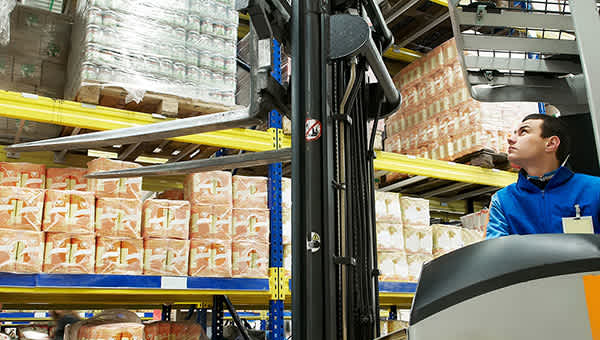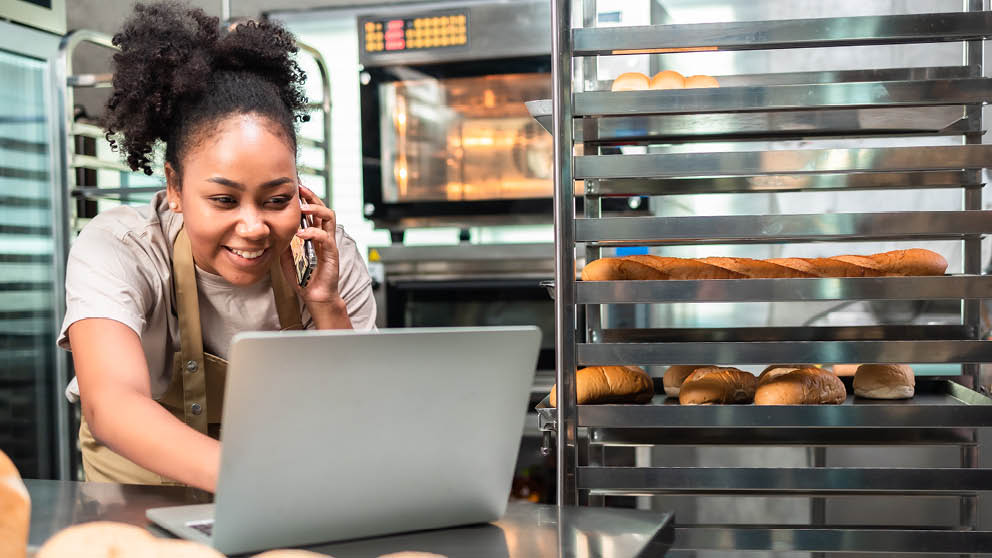6 key players in the foodservice supply chain

When selling food and beverage products to the foodservice industry, several players are involved. Which ones you engage with and on what level depends on your goals for your food or beverage products. Here are six key players in the foodservice sector.
1. You
The food sold to the foodservice industry starts with producers and processors. Producers include farms, fisheries and aquaculture. Processors include a variety of food and beverage businesses that transform the primary products provided by the producers into other forms that are attractive to foodservice operators.
2. Co-packers
Co-packers are industry partners that manufacture or package products on your behalf. They’re valuable partners for smaller processors lacking the scale to sell to the foodservice industry. Similarly, distributors and group purchasing organizations (discussed below) require systems and controls to be in place, which some smaller processors cannot provide, but co-packers can offer.
3. Brokers
Some processors employ their own sales team, and others use brokers, who are agents that sell your products.
Should sales decline, brokers often provide other services, such as sales strategies and troubleshooting. They also leverage their relationships with distributors and foodservice operators, which may otherwise be difficult for you to access.
Such services are invaluable when you don’t have the networks or resources to sell your product or want to focus on producing the product and let others handle the sales and marketing function.
Brokers mostly operate on a commission, typically in the 5% to 20% range. When dealing with brokers, you may need to show that a product is in demand and that you have the production capacity required before the broker takes on your account.
4. Distributors
Distributors’ services include logistics, sales and delivery of goods to foodservice operators on your behalf. They range from specialty distributors focused on a limited product range (such as cheese or beef) to national broadline distributors that try to provide a one-stop shop for foodservice operators.
Some foodservice operators select a broadline distributor to reduce the resources required for ordering, receiving and accounting. Others, who want more choice regarding key ingredients on their menus or require items not provided by broadline distributors, use specialty distributors. Or some could use both.
Unlike brokers, distributors typically purchase your products at a volume discount, take possession of them, and sell them at a markup. Sometimes, they process products (such as cutting up produce or meat proteins). Distributors’ warehouse space is limited, and they typically require a minimum sales volume to list a product. Products that don’t meet or exceed the minimum sales are typically dropped. To secure a listing with a distributor, an existing product is removed.
Distributors may offer thousands of products. Although they have sales teams, don’t rely on them to market or sell your products to foodservice operators (distributor’s sales and marketing typically focus on high-margin items).
Smaller chains and independent restaurants often ask broadline distributors to identify products that solve their operational challenges (such as a lack of skilled labour requiring value-added product options) but cannot actively market or promote every product they carry. In this vein, you must market your products to ensure demand, and ensure distribution partners recognize the products’ features when looking for client solutions.
Food safety is critical for all foodservice operators. Broadline distributors will not likely carry products that do not have food safety certifications, such as Good Agricultural Practices (on farm) and Hazard Analysis Critical Control Point, commonly known as HACCP, certification. You must implement strict food safety protocols and ensure the appropriate certifications are achieved. If certification is not feasible, co-packers may only provide this function once you can develop the resources.
5. Group purchasing organizations
Large foodservice companies can secure volume discounts and rebates on the products they purchase. They also have sway with distributors to get products listed.
Group purchasing organizations, or GPOs, aggregate the purchase volumes of their members to realize the purchasing advantages of these larger operations. With a GPO, several foodservice operations may purchase the same processed products and realize pricing discounts because of the combined volume.
GPOs are funded by membership fees, administration fees paid by product vendors or a hybrid of the two methods. GPOs typically select vendors and food and beverage processors through a Request for Qualifications (RFQ) process followed by formal bidding. Contracts with vendors and processors are awarded regularly, usually annually. National GPOs, such as Foodbuy or Avendra, may offer opportunities for both national and regional processors.
GPO members are typically required to maintain a minimum percentage of total purchases through the organization to ensure it realizes the volumes necessary to obtain the price savings. This requirement, which can be as significant as 80% of total purchase volume, may limit a foodservice operator’s ability to purchase your product unless the GPO offers it.
Like broadline distributors, GPOs require food safety certifications.
6. Direct sales
Some food processors sell directly to foodservice operators and may also deliver the product. Typically, a direct sales strategy is viable only for larger processors that have the resources to perform these functions and can provide consistent quantity and quality of the product. However, small processors may establish relationships with a restaurant that features local foods. Such restaurants are less demanding about consistent product availability, purchasing food in season and changing their menu offerings based on what is available.
Making the choice
Your target market and internal resource capabilities often dictate which foodservice supply chain partners to use, and you may even choose to use various options. Understanding your resources and your target customers’ requirement will help determine the supply chain partners that will work best for your products.
Article by: Jeff Dover, Principal, fsSTRATEGY Inc.

When traditional funding methods don’t work, it’s time for business owners to look for more creative funding models.

